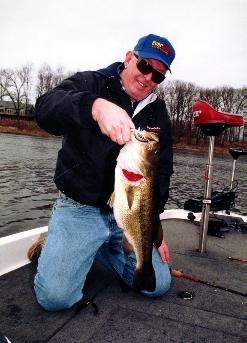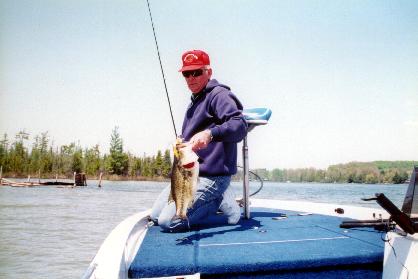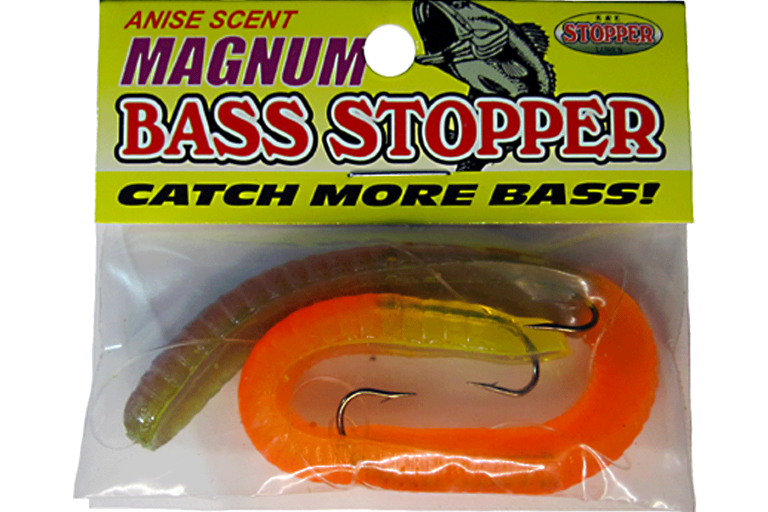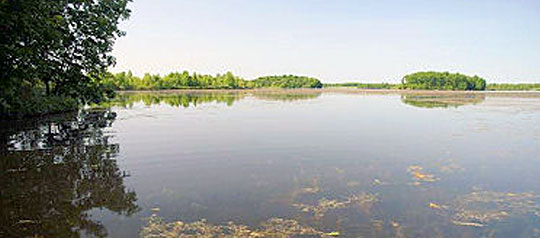
Three inches of wood pokes from shallow water hinting at the lair below. A compact white spinnerbait slides in nearby, deftly aimed between dead shoreline cattails and the stickup. No other place to hide. The lure flashes past the twig. A bulge, then boil, signals the take. The rod arcs. Me against six pounds of dark green, eating machine.
If I had a nickel for every time this scene of fall largemouth ambush pops into my head, during the typical staff meeting for instance (sorry Boss!). Well, let’s just say I might be able to quit the day job after all. I love fall bass fishing. Actually, I love all fishing, but fall bass battles have created my favorite lasting memories. I’d like to tell you why, and how, to make the most of the year’s best bass fishing.
The ‘why’ part is easy. Fall fishing is very good. Using my fishing fantasy location above, if it were summer, I’d be lucky to catch a ten-inch bass. Fall, now that’s another story. The same exact spot could yield a huge hulk of a bass. Fall is the best season for pursuit of big largemouth bass.
I actually believe most bodies of water produce better during the fall. Weed cover is dead or dying. Man-made structures are being pulled from the water. Bass begin running out of hiding places. Also, humankind’s aquatic activity decreases drastically after Labor Day weekend. Bass, having a very short memory (or at least I think so), start hitting lures again like they’ve never seen them before. To help out, autumn bass often school up tighter causing more competition. Competitive bass make more mistakes.
Despite all this, some lakes and rivers are still better fall candidates than others. Since we want to increase our odds for success, we want to identify these waters. Luckily, one type of fall hotspot exists in relative abundance and is easy to identify using a minimal amount of information. The ideal lake or river needs a number of backwater areas. These can be bays, creek arms, or even man-made canals. The best backwaters contain a decent amount of wood cover. Largemouths gravitate to backwater wood during the fall.
Like clockwork, largemouth bass make this strong movement into backwater areas starting around Labor Day. Once you’ve identified a productive backwater, you can return and catch bass year after year. Some of the best lakes in Michigan for this pattern are very weedy during the summer. Lots of weeds buffer the bass from heavy fishing pressure, and even prevents heavy pressure on some lakes. Examples of these types of lakes include reservoirs such as the Tittabawassee River impoundments – Secord & Wixom, and Lake Ovid in Clinton County; shallow lakes similar to Lower Crooked in Barry County; and the lower Grand River Bayous near Grand Haven. Another type of great fall backwater spot, real sleepers, includes river-run reservoirs such as Lansing’s Grand River impoundment above Moores Park Dam.
I use these specific examples as guidelines to help identify similar places. These are locations I personally know have very good to excellent fall largemouth fishing, although they may or may not be considered good summer locations. Most autumns, you’ll find me haunting one of these after Labor Day. Waters near your home may be just as good or better. To find them, look for a similar makeup. If you aren’t familiar with these specific examples, you can get an idea of their formation from a lake map or even a county road map.
I am fortunate to fish many tournaments with good anglers from all over the Midwest. I learn of many excellent waters through this great word-of-mouth source. It’s a superb information system, but not the only way to find out about hot spots. You can quickly identify fall fishing possibilities using the maps and a little ‘drive-by’ scouting.
I always recommend getting a lake map first if available. Michigan lake maps can be purchased inexpensively from the Michigan United Conservation Clubs headquarters at 517-371-1041. They have an extensive catalogue. Maps are invaluable in searching for fall hot spots and targeting potential fishing locations. Use the map to look for backwaters ranging from two to ten feet deep. Quite often, the best, especially for large bass, will have good access to channels or dropoffs. I fish these first, but usually check all areas to rule them out. Bass are full or surprises.
Once on the water, a real advantage of shallow backwater fishing – you can usually fish regardless of the weather. You’ll be protected from breezy weather. Fall weather is often cool and wet, but those overcast, drizzly October days have produced many of my largest catches. Another bonus – fall bass fortune can be had for only a handful of lures. The bulk of my backwater bass are caught on white spinnerbaits and weedless jig and pigs. Start out with a double white willow leaf bladed spinnerbait. On unfamiliar water, or those with most bass averaging around two pounds, use a compact lure, say about a quarter ounce. If I know the lake holds numbers of bigger bass, I‘ll start out with a large lure, half an ounce or more. Gives them something worth eating.
Rig up a white jig and white pork trailer. Though not as common as the black and blue, or brown jigs most anglers throw, a white jig is a deadly fall largemouths combo when bass are on minnow patrol. I still use dark colors, especially if I feel the bass are keying on crayfish, or around rocks. More often, I believe color is for the angler, not the bass. The key for fall bass is getting a lure close enough to be an easy meal. When bass are aggressive, color may not matter at all. It’s hard to prove color’s importance to a bass. It’s not hard to prove color’s importance to an angler. If you have great confidence in your lure color, use it. You will fish it better.
Time to start fishing. Visually locate every piece of cover. Usually, the biggest, baddest bass will be in the thickest prime cover. If other anglers are out, I go right to the best looking wood cover. If no one else is in sight, start at the nearest object. Although cover such as a large tree laying in the water is prime, fall backwater bass often relate to very small objects and bottom changes. I’ve caught fall bass from water pumps, barrels, buckets, pipes, single weed strands, metal rails, tires, small wooden posts and under floating leaves or grass to name a few. Fish everything carefully and quietly. Before you start, decide on the direction you’ll move. I like to go counter-clockwise around a bay simply because I cast forehand most accurately. In shallow water, you’ll fool more bass with the quiet approach and short, accurate casts.

Make multiple casts to cover. On good days, the first cast will catch the aggressive bass. I still throw several casts at the target from different angles. Incredible numbers of bass can bunch up in small areas, especially later in the season. Start with the spinnerbait. Prime cover requires you drop the jig in a few times before you move on. The big bass this follow up tactic often catches is the one that holds you over during those long, cold winters. As you retrieve, bump your lure into limbs, dock posts, pad stalks, anything solid. The abrupt change in cadence triggers many strikes, especially from big, wary bass. With cover close to shore, don’t be afraid to jump your lure into the water from shore. How a big bass can get so shallow sometimes is a mystery, but they do. Overhanging brush is particularly good.
A recent experience proved this point. On a chilly fall day, I rented a rowboat on a small lake nearby. I started off fishing available wood cover. After two nice bass, I ran out of obvious spots. I rowed around most of the lake. Being a breezy day, fishing the remaining weed edges was very difficult and inefficient from the little rowboat. My arms were tired and the cement anchors weren’t holding. The last place I hadn’t fished was protected. I faced the large, shallow mud flat. Patches of scraggly, sparse pads were visible, but no weed edge. And no wood. A white buzzbait attracted one tiny bass with more heart than head. I proceeded into an open lane between shore and the pad beds hoping for shallow weeds. Instead, I found a few tiny bass chasing tinier minnows. The only visible cover was four small bushes with branches growing just over the water’s edge. It was really shallow. It appeared a small bass might squeeze under the branches if you pushed it real hard, into the mud…on its side.
I launched a small jig to the edge of the first branches, my lack of faith apparent in a sloppy splash. One branch quivered slightly. Probably the shockwave. I set the hook out of habit expecting to dodge my lure. Instead, a respectable largemouth tail-walked across the water (mud). Turns out there were five bass…three nice ones…in that short stretch of branches. An obvious clue I missed became apparent when I pushed up to shore scattering many small frogs. My lure probably looked like an unfortunate frog (victim) jumping into the water. Explains how I got away with my splashdown. Bass go where to food is.

There are no guarantees in bass fishing, but following these tips on your nearest backwater this fall could introduce you to the next best thing for largemouths; And you may just catch those big ones that eluded you all summer.
Lures & Tackle for Backwater Bass
Other top lures choices for backwater bass include minnow baits such as soft plastic Sluggos and Rattlin’ Rogues or Bomber Long A’s; Crankbaits such as Bomber Model A’s in dark green crayfish or firetiger; And Ringworms.
Throw jerkbaits as tight to cover as possible or into openings. Bass that don’t respond to spinnerbaits or jigs can be teased into striking a minnow bait twitched slowly and erratically. Model A Crankbaits can be bounced right through brush with a little practice. The careening lure fools pressured bass into reacting to something they rarely see.
Ringworms, rigged weedless, can be dropped through small holes in cover. I use this plastic worm when bass aren’t chasing or reacting to faster presentations. It’s a small finesse lure that excels at catching big bass. Because fall lure needs are simple, you don’t need many different rod and reel combinations either. Three will cover most situations. Foremost, a five and a half to six foot medium heavy casting rod makes a great spinnerbait rod. The short rods helps with quiet, sidearm casts.
Since I don’t want to lose a huge bass to broken line, I spool my spinnerbait reel with fifteen to thirty pound test line depending on the cover and potential bass size for the lake. Use a six to seven and a half foot rod for flipping jigs and worms into cover.
Whether a spinning or casting rig is up to you. The casting rig has more power, while the spinning rig presents lighter lures easier. Spool up with twelve to thirty pound tough line such as Trilene XT or Fireline, one of the new ‘super’ lines. For me, the third rod is always a seven foot crankbait rod. I like twelve to seventeen pound line. I replace hooks on my Model A’s and minnow baits with larger high tech hooks such as Mustad Triple Grips or Heddon Excaliburs. These new hooks stick and land more bass. Short of replacement, make sure you sharpen your crankbait hooks and keep them sharp.
*This article previously appeared edited in the September 1997 issue of Michigan Out-of-Doors Magazine





